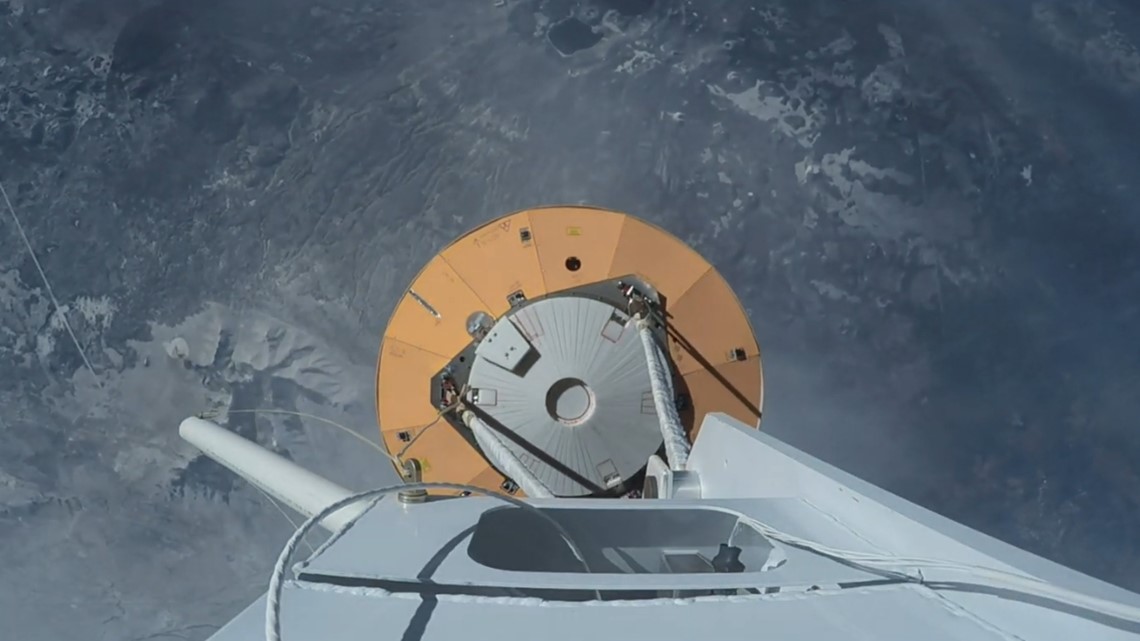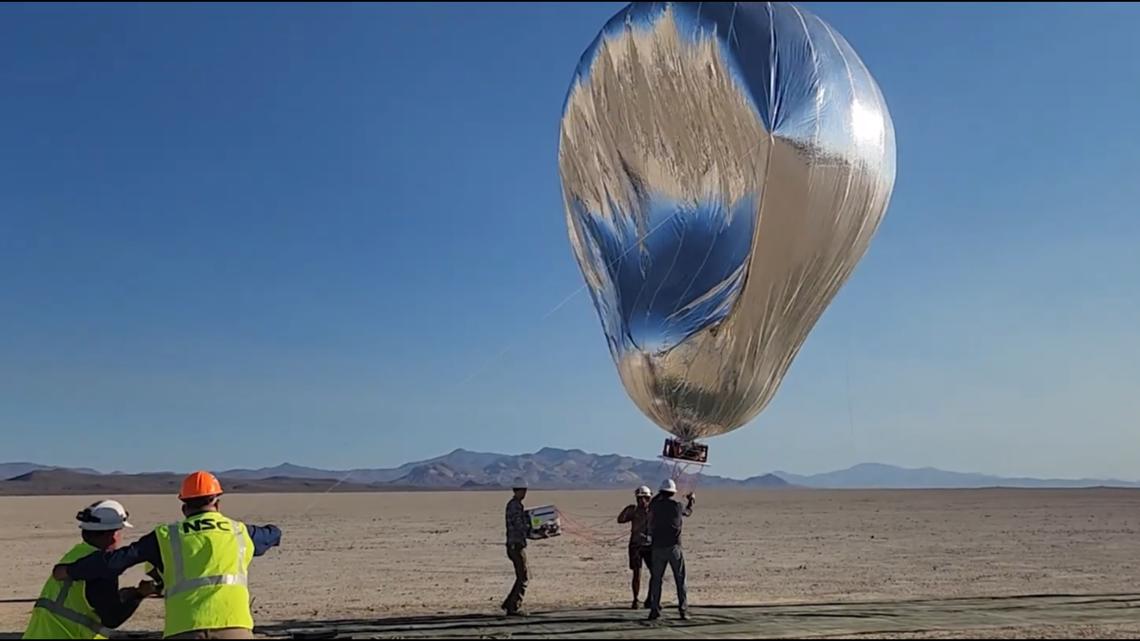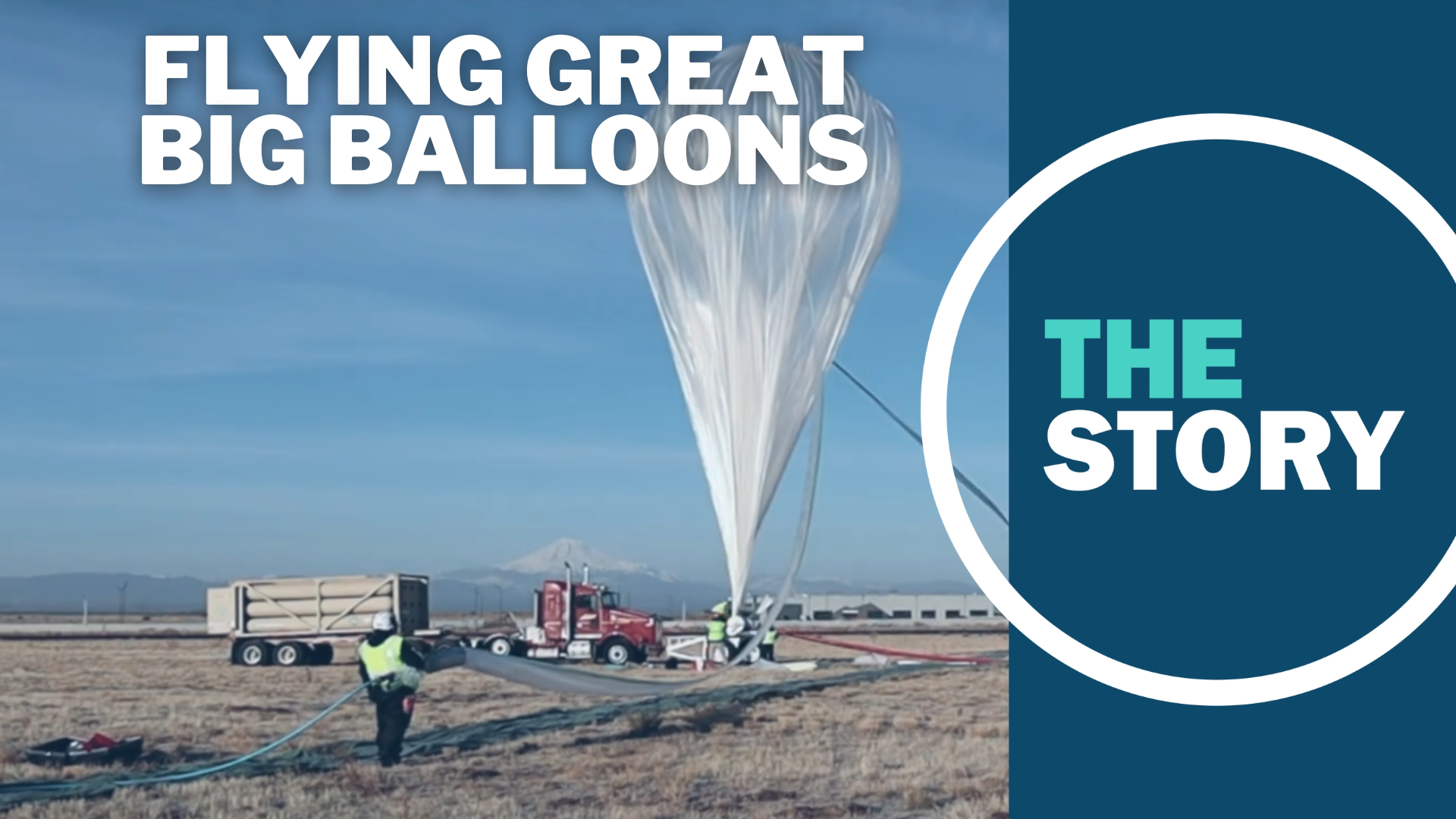TILLAMOOK, Ore. — Despite protestations from the Chinese government, most Americans have been told by now that a large, high-altitude balloon that crossed over the U.S. last week was not just researching the weather.
According to the Biden administration, the balloon was equipped to spy — collecting intelligence signals as part of a huge, military-linked aerial espionage program using a fleet of balloons to target more than 40 countries.
The New York Times reported on U.S. state department claims that the balloon had multiple antennae in an array, likely capable of collecting communications and tracing them to their source. It also had solar panels large enough to run multiple active intelligence sensors, officials said.
To learn more about high-altitude balloons like this and the airspace in which they operate, The Story's Pat Dooris turned to a Tillamook-based company called the Near Space Corporation.
Near Space is on the cutting edge of balloon-based research, and the company routinely works with NASA, the European Space Agency and the Jet Propulsion Laboratory in Los Angeles.
In a video that Near Space shared with KGW, staff begin preparing to launch a balloon at night so they could be ready at dawn — the best time of day to get airborne. The company was preparing to test the parachutes that would help land the descent module for Europe's ExoMars 2022 rover onto the Martian surface.


Near Space president Kevin Tucker told KGW that the company started about 28 years ago and has been in Tillamook more than 20 years.
"We're over in Tillamook because we're on a former Naval Air Station site with a huge blimp hanger that we occasionally use," Tucker said. "The Port of Tillamook Bay owns all that as well as the property we're on, and they're a phenomenal partner.
"The other major reasons we're over here are the airspace is extremely empty, there's no commercial air traffic routes. Here we have direct access to the open ocean and the Department of Defense airspace offshore. The other reason it is absolutely gorgeous over here and a great place to live."
In Near Space's video, the company is sending a balloon up high into the atmosphere, 100,000 feet up — far above the 30- or 40,000 feet where most planes fly. From there, the balloon will drop a payload to see if the parachutes work properly and if they'll successfully slow the capsule's fall from that height.
"Mach 0" technology
These balloons are big, but "big" doesn't quite capture it. In some cases they're as tall as a five-story building. There's also very little guessing when it comes to where a balloon will go — which can be helpful context in thinking about the Chinese balloon.
"You continually do weather updates," Tucker said. "We model the flight trajectories of the balloon. So whereas, like, if you go in a hot air balloon, you may not know exactly where you're going to go. You generally know where you're going to go, or you hope, with these type systems."
"Once we get out of the ground effects weather at 30- to 40,000 feet, we have a very high level of predictability, so we check trajectory models we know very accurately where the balloon will go and where we'll be conducting the test exercises and then controlled descents," Tucker continued. "We have to coordinate all of that with the FAA in advance and at the time of the flight test itself. So we have a lot going on and then it comes up to the point of where everything lines up and you're ready to launch and you want that time frame to be right in that calm of the morning when the ground winds are at the lowest. That also gives us the entire daylight area to run the operation, go get things as they return to earth, etcetera."
Another project that Near Space is working on, a particularly fascinating one, involves flying a balloon through the atmosphere of Venus — something that's never been done before. Due to the intense pressure and extreme heat on the surface of Venus, the type of modules and rovers that work on Mars don't last very long. But the planet's upper atmosphere could be more hospitable for the balloons that Near Space operates.


"We are working with the Jet Propulsion Laboratory on a balloon system which cannot orbit, because that's higher, but actually fly using the winds around Venus, to descend into the atmosphere of Venus and be able to do scientific research on both the atmosphere and the surface," Tucker said. "So that requires that the balloon be able to exist in an atmosphere that's mostly sulfuric acid — it's very dense. And there is a very, very large difference in the temperature between the Venus day and night. So pressure changes directly with temperature. So with the balloon, that's something you have to account for, so that balloon system does have what we call 'altitude control,' or the ability to vary the the buoyancy to compensate for those things."
On the Chinese balloon in particular, Tucker said he doesn't have any inside information. However, he knows his way around flying research balloons. They tend to be slow, but as he mentioned before, fairly predictable.
"Yeah, an important thing about balloons is is actually their elegance. They go with the wind always," Tucker said. "They — we jokingly refer to it as a 'Mach 0' technology, so as soon as you enter ... you become free floating. You leave the ground and let go of it. The system is going to go wherever the wind is moving. And as you get higher into the stratospheric winds, there's a very high level of predictability and modeling and forecasting where those are going to go, so you can model trajectories with a fairly good amount of accuracy, at least several days out."
Having a balloon like that blow off course during a short flight is unlikely, Tucker indicated. But during a longer flight, with changing winds, it's more possible.
"The point is, is the balloons are going to go where the winds take them. The technologies that you (don't typically have on board are) things like propellers or jets to steer left or right," Tucker continued. "What you can do is, in some cases, adjust the altitude the balloon is at, knowing if there are different winds in different directions and you want to catch them. So that is a way you can, in essence, steer the balloon. However, that means there has to be communication with the system to do that, and also enough technical capability to adjust the buoyancy of the balloon system in order to go to the right altitudes."

